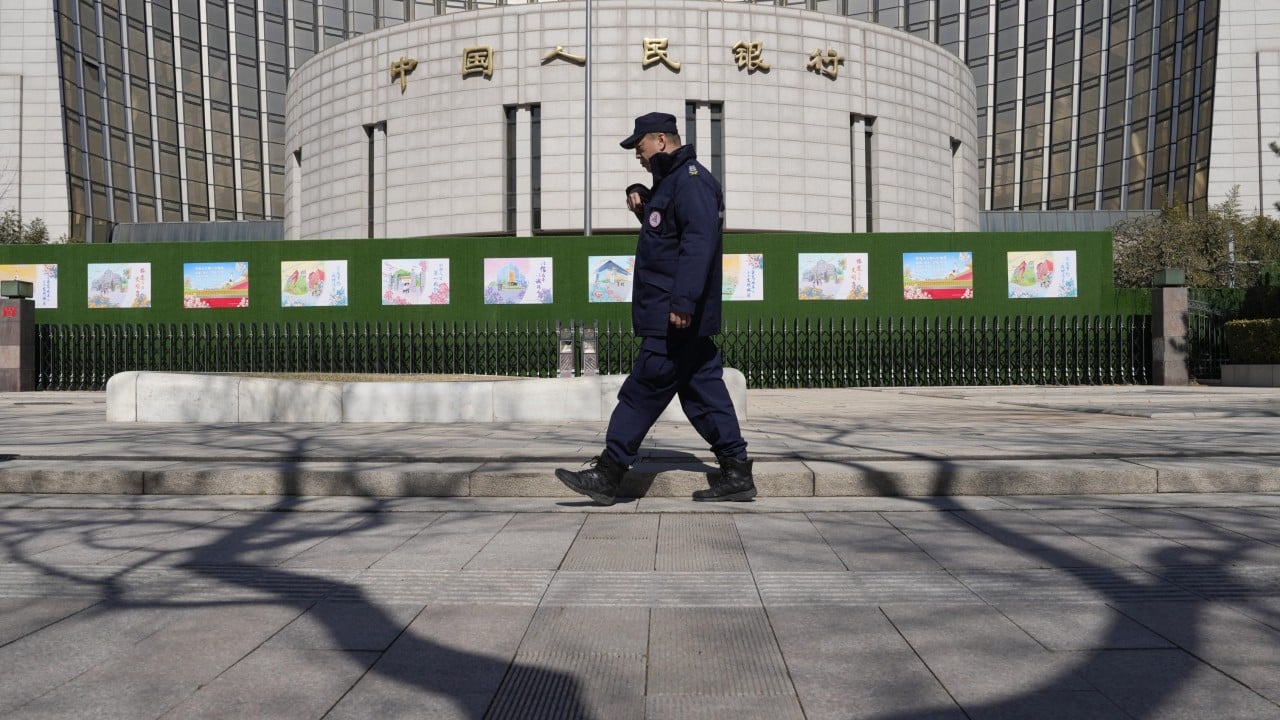With Beijing set to overhaul its monetary tools by restarting treasury bonds purchases in the secondary markets, China’s central bank and finance ministry are expected to dovetail efforts to support the economy as fiscal policies take on a crucial role, according to a former People’s Bank of China official.
Sheng Songcheng, the former chief of the PBOC’s statistics department, also said that conditions, including the sheer size and liquidity of China’s bond market, are ripe for the central bank to trade bonds in the secondary markets to inject money to aid the economy.
His remarks at the annual Lujiazui Forum in Shanghai on Thursday came after PBOC governor Pan Gongsheng confirmed for the first time on Wednesday that discussions between the central bank and Ministry of Finance to end a two-decade hiatus on bond trading had taken place, following an order by President Xi Jinping at October’s twice-a-decade central financial work conference.
“Such coordination will see the PBOC dovetailing efforts with the finance ministry, as China’s macroeconomic management will be more about fiscal policies, while the PBOC will have a supporting role,” he said.
Beijing’s top leadership has mandated expansionary fiscal policy and prudent monetary policy, as well as an inter-cyclical and countercyclical adjustment mix, to keep the economy ticking, without resorting to aggressive quantitative easing.
But the world’s second-largest economy continues to be bedevilled by deflationary pressure and stubbornly weak demand, with property sector distress and a local government debt crisis still persisting.
Questions have been raised about how Beijing should more effectively deploy fiscal and monetary policies to defuse crises for the economy to attain the around 5 per cent annual growth target, while also keeping risks at bay.
Sheng said one well-established way for monetary and fiscal policy to work in tandem was the PBOC’s reserve requirement ratio (RRR) cut, adding that since most central and local government bonds are bought by commercial banks, such cuts could unlock additional capital to support new bond issuances.
In February, the central bank cut the amount of cash that commercial banks must hold as reserves by 50 basis points and injected 1 trillion yuan (US$138 billion) of liquidity into the market.
It had also trimmed the ratio by 25 basis points in September, but analysts said further reductions may not happen too soon.
Wen Bin, chief economist at China Minsheng Bank, said the liquidity environment has improved and another RRR cut may only happen in the fourth quarter.
The PBOC’s bond trading is viewed as a new tool. Traditionally, treasury bonds are held as collateral for the central bank’s relending to commercial banks.
But Pan warned of risks of nonbank financial entities holding too many medium to long-term central government bonds, as this could create a maturity mismatch and interest rate risks.
The governor also vowed to maintain an upwards-sloping government bond yield curve.
More importantly, changes in bond pricing will have a head-on impact on the prices of other assets in the market
“The timing and pace of bond issuances, as well as term and interest, all involve monetary policies, meaning higher requirements for the finance ministry as the issuer as well as the central bank as the trader,” Sheng said.
“[These requirements] cover frequency, scale and the remaining maturity of the bonds held by the PBOC.
“More importantly, changes in bond pricing will have a head-on impact on the prices of other assets in the market.”
In recent months, government bond issuance has gathered pace as the finance ministry has cranked up its fiscal policy support.
May’s net government bond financing accounted for nearly half of the total between January and May, according to Sheng.
He also added fiscal expenditure in 2024 – which includes fiscal deficit as well as special and ultra-long bonds – would hit 8.96 trillion yuan, compared to last year’s 8.68 trillion.
He predicted that actual expenditure this year would see a spike since much of the 1 trillion yuan of special bonds announced in October would be used this year.


